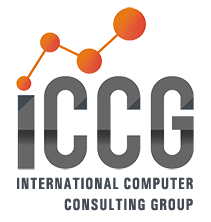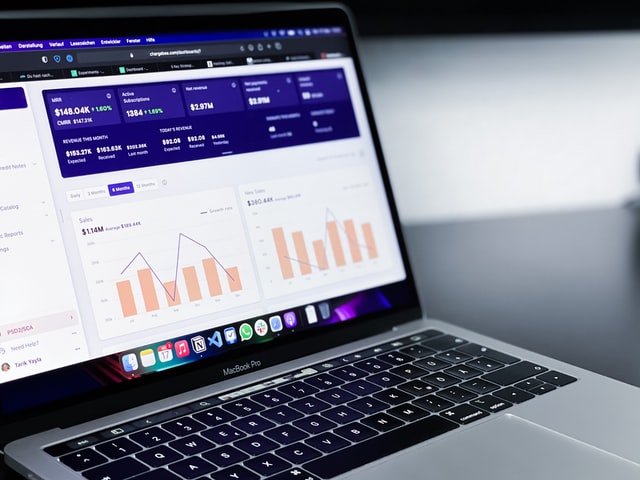Building a Power Team:
The first major step in the journey toward adopting a new ERP system for your organization is assembling an effective project team. A well-appointed team can help you not only select the best possible ERP system suited to meet your organization’s needs but also mitigate employee resistance and secure leadership buy-in.
Assembling an all-star team for your ERP project is critical to your implementation success, so do not take these decisions lightly.
Read More
Topics: ERP, Distribution, Supply Chain, Fashion & Apparel, Supply Chain Visibility, digital disruption, Enterprise Resource Planning, Enterprise Software, Retail Supply Chain, Supply Chain Operations, Infor CloudSuite M3, Infor CloudSuite ERP
Are you reducing idle cash while reducing risks?
Today, financial services organizations are more focused on what’s necessary to safeguard business continuity and solvency. Much of this begins with greater visibility and reliability of key data to help drive your critical business decisions, especially during critical market changes.
Our current blog series is reviewing cash and treasury best practices you can follow to prepare for instant payment changes and build true cash visibility. Last week we looked at understanding the impact of instant payments. In part two this week, we focus on generating cash positioning.
Consideration #2: Generate cash positioning
To satisfy both operational and regulatory requirements, financial services organizations need operating models for cash and liquidity management. To achieve and maintain this capability successfully, organizations need to focus on gaining greater visibility into their cash and liquidity.
Download the eBook
Cash and treasury: Prepare for instant payments and build true cash visibility
Read More
Topics: ERP, Distribution, Supply Chain, Enterprise Resource Planning, Cloudsuite Fashion & Apparel, Infor M3 ERP, Infor CloudSuite PLM for Fashion, Infor CloudSuite Fashion PLM, Enterprise Software, Infor CloudSuite Fashion, Supply Chain Management, Infor CloudSuite M3, Infor CloudSuite ERP
Today, financial services organizations are more focused on what’s necessary to safeguard business continuity and solvency. Much of this begins with greater visibility and reliability of key data to help drive your critical business decisions, especially during critical market changes.
Whether you call it faster payments, immediate payments, instant payments, or fast money, real-time payments technology has gained a solid foothold in the payment processing world.
Additionally, to satisfy both operational and regulatory requirements, you need operating models for cash and liquidity management. To successfully achieve and maintain this capability organizations need to focus on gaining greater visibility into their cash and liquidity.
Download the eBook
Cash and treasury: Prepare for instant payments and build true cash visibility
We have compiled a blog series that will focus on cash and treasury best practices you can follow to prepare for significant changes with instant payments and build true cash visibility. This week, we focus on the first consideration: understanding the impact of instant payments.
Read More
Topics: ERP, Distribution, Supply Chain, Enterprise Resource Planning, Cloudsuite Fashion & Apparel, Infor M3 ERP, Infor CloudSuite PLM for Fashion, Infor CloudSuite Fashion PLM, Enterprise Software, Infor CloudSuite Fashion, Supply Chain Management, Infor CloudSuite M3, Infor CloudSuite ERP
State governments want their software to be secure, compliant and designed for the 21st century. As such, many state governments are evaluating their current ERP platforms to determine how to modernize financials, procurement, human capital management, and payroll applications.
While some have pursued modernization by embarking on multi-tenant cloud journeys, most organizations are still in the planning phase.
They are moving in the right direction, though, as multi-tenant cloud SaaS software ensures applications are continually enhanced without the need for a multi-million-dollar, multi-year project. Multi-tenant cloud software also protects limited resources from overwhelming or menial tasks such as:
- Babysitting servers
- Applying and testing an endless number of patches
- Performing backups
- Managing disaster recovery
Read More
Topics: ERP, Distribution, Supply Chain, Enterprise Resource Planning, Cloudsuite Fashion & Apparel, Infor M3 ERP, Infor CloudSuite PLM for Fashion, Infor CloudSuite Fashion PLM, Enterprise Software, Infor CloudSuite Fashion, Supply Chain Management, Infor CloudSuite M3, Infor CloudSuite ERP
The evolution of supply chain business models has been accelerated by unprecedented disruptions. As a result, there has been a clear shift from analog supply chains models of the past into a trajectory towards a digitalized ecosystem. These new business models recognize and necessitate the move to a digital and integrated supply chain that provides visibility and ease of use for consumers.
This journey is about moving towards a world where all parties participating across your network are connected to a single version of the truth. Supply chain thinking is shifting from ‘linear supply chains’ to ‘supply chain eco-systems’ propelled and supported by digital technologies.
Gartner has established a five-stage model of the journey to supply chain maturity, ranging from manual, analog systems to a fully digitalized ecosystem. Key differentiators along this evolutionary chain include consideration of data and collaboration, with the ultimate goal of integrating data across multiple systems to achieve a fully connected ecosystem that provides transparency and visibility for your company both internally and externally.
Read More
Topics: ERP, Fashion & Retail, Distribution, Supply Chain, Fashion & Apparel, Supply Chain Visibility, Supply Chain Network, Cloudsuite Fashion & Apparel, Infor CloudSuite PLM for Fashion, Infor CloudSuite Fashion PLM, Enterprise Software, Infor CloudSuite Fashion, Supply Chain Operations, Supply Chain Management, Infor CloudSuite M3, Infor CloudSuite ERP
Stability is important. Hotels, casinos, and resorts have guests they need to serve right now, today. Hospitality software solutions in place help them do that by taking care of the basics: reservations, check-ins, folios and check-outs, along with a staggering variety of in-house services and their associated charges. Essential software like hotel PMS is pretty “sticky” that way; it’s easier to stick to what you’ve got than it is to change. Why fix what isn’t broken?
Here’s the thing. Five years from now – perhaps sooner – the way guests engage with hospitality providers will likely look very different. Innovative solutions and platforms will be necessary to scale to that new paradigm, whatever it may be. So how do hospitality organizations know when it’s time to start planning for that? How do decision-makers know when it’s time to get unstuck? Here are 3 considerations to help answer that question.
Read More
Topics: ERP, Distribution, Process Manufacturing, AI, Artificial Intelligence, Food Technology, Business Intelligence, Cloud BI, Enterprise Asset Management, Enterprise Software, Business Processes, Infor CloudSuite M3, Infor CloudSuite ERP
As new hospitality technology emerges and as organizations increasingly invest in it, the ways people do their jobs change in response. Most of the time, this means greater efficiency, and a way for teams to concentrate on key tasks while the technology takes care of the necessary minutiae. Some of the time though, the rise of certain technologies can cause some concerns that with certain functionality in place, the human factor will get lost.
Hospitality AI functionality in hotel revenue management and in hotel pricing tools is a case in point. The conversation around automation via algorithms has been too easily positioned with a “versus” between machine learning solutions and professional expertise. Yet, the features of the technology and years of knowledge and experience held by revenue and strategy teams isn’t adversarial. The relationship between them is more about achieving greater focus and clarity. How do science-based algorithms in revenue management and pricing solutions help your organization do that? Let’s look at some key points.
Read More
Topics: ERP, Distribution, Process Manufacturing, AI, Artificial Intelligence, Food Technology, Business Intelligence, Cloud BI, Enterprise Asset Management, Enterprise Software, Business Processes, Infor CloudSuite M3, Infor CloudSuite ERP
Are you able to monitor all intraday activity for true cash visibility?
Today, financial services organizations are more focused on what’s necessary to safeguard business continuity and solvency. Much of this begins with greater visibility and reliability of key data to help drive your critical business decisions, especially during critical market changes.
Our current blog series is reviewing cash and treasury best practices you can follow to prepare for instant payments and build true cash visibility. In the previous post, we reviewed best practices for enhancing cash and liquidity forecasting. This week, we focus on ways to establish intraday liquidity monitoring capabilities.
Consideration #4: Establish intraday liquidity monitoring capabilities
Banks and financial services organizations bound by intraday liquidity regulations have an opportunity to build a stronger competitive position.
According to consulting firm Oliver Wyman: “Analysis indicates that a 25–50% reduction in intraday liquidity costs is well within reach. Further, banks will also stand to benefit from optimal efficiency, improved risk management, and timely decision-making around this scarce resource.” There are numerous financial and non-financial benefits, as well as new technological tools that simplify these complex treasury functions.
Download the eBook
Cash and treasury: Prepare for instant payments and build true cash visibility
Read More
Topics: ERP, Distribution, Supply Chain, Enterprise Resource Planning, Cloudsuite Fashion & Apparel, Infor M3 ERP, Infor CloudSuite PLM for Fashion, Infor CloudSuite Fashion PLM, Enterprise Software, Infor CloudSuite Fashion, Supply Chain Management, Infor CloudSuite M3, Infor CloudSuite ERP
Traditionally, almost all business intelligence and analytics solutions were designed as general-purpose platforms or desktop tools suitable for any industry, department, or use case. That does mean, of course, that the burden of developing data models, data pipelines, dashboards, and reports falls to the customer. They effectively start with a 'blank sheet of paper,' which, in theory, can be developed to fit the organization's exact needs. However, the reality is that the organization may not have either the skills, resources, or time to develop an analytics solution that quickly meets business requirements.
The answer to avoiding this overhead of entirely homegrown analytics is to use a modern analytic application that can deliver ready-to-use analytics, right "out-of-the-box." Deployment and adoption of these analytic applications are accelerated because of built-in content developed by industry domain experts that understand the industries, roles, data, business applications, and specific analytics required by typical business user personas. A significant amount of development time can be saved because this domain-expertise-driven content can replace typical internal development processes.
Read More
Topics: ERP, Manufacturing, Distribution, Process Manufacturing, Industrial Manufacturing, Digital Manufacturing, Business Intelligence, Cloud BI, Enterprise Asset Management, Enterprise Software, Business Processes, Infor CloudSuite M3, Infor CloudSuite ERP
A critical lesson many organizations have learned when measuring the success of analytics initiatives is that speed of deployment and widespread user adoption are key factors to consider. These are key benefits of analytic applications delivered with or embedded in ERP systems or business applications.
Analytic applications provide pre-built business intelligence (BI) and analytical capabilities that promise to democratize analytics because most of the hard work in transforming data to insights has already been done. However, the historical challenge these applications faced was that they weren’t built with agile cloud technology or modern data architectures that could keep up with the growing complexity, scale, and changing requirements of the line of business (LOB)-driven analytic requirements.
Read More
Topics: ERP, Fashion & Retail, Distribution, Supply Chain, Fashion & Apparel, Supply Chain Visibility, Supply Chain Network, Cloudsuite Fashion & Apparel, Infor CloudSuite PLM for Fashion, Infor CloudSuite Fashion PLM, Enterprise Software, Retail Supply Chain, Infor CloudSuite Fashion, Supply Chain Operations, Supply Chain Management, Infor CloudSuite M3, Infor CloudSuite ERP






.jpg)



